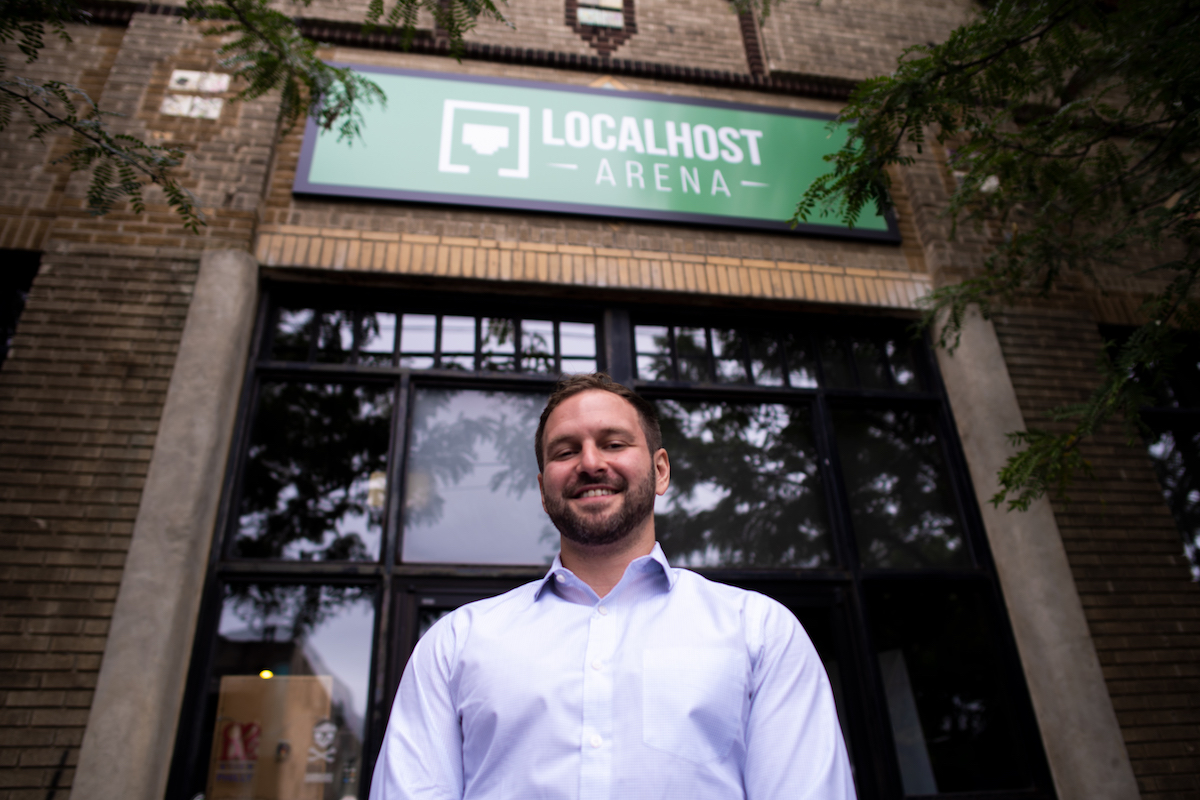The lean canvas business model focuses on getting user feedback — lots of user feedback. It’s about interviewing customers, validating ideas, failing fast, learning from these failures, then analyzing the facts.
That’s the basics of Penn’s EAS 590 course, which concluded Dec. 9 with four teams presenting their “Web/Mobile Lean Launchpad” learnings.
The course put students in real-world situations, having them talk to customers, VCs, mentors, moms, restaurant owners and more.
“The efforts they put in validating an idea and talking to customers are worth so much more than the time they will spend developing their product,” said EAS 590 professor Tomas Isakowitz. “They need to develop skills to talk to people, and really find out what’s happening in the market by doing primary research.”
Here’s a recap of the projects that presented.
###
Team 1: Community (née Renters)
The first team to present was Renters. The idea behind Renters was to create a marketplace that connected renters with borrowers.
Team members talked about how the EAS 590 class helped them analyze their idea’s value proposition, do market research, interview people and process the data they collected.
They first considered allowing people to charge for it, but after talking to more customers, they realized that people cared more about the psychology of helping others out. People were much happier lending things not for the market price but for the sake of something bigger. After realizing this, the team was really happy — until they realized they didn’t have a way to monetize Renters anymore.
So they decided to focus on the karma aspect, instead, and pivot to their current idea, Community. They’re currently exploring ways to monetize their system, and are looking forward to submitting their idea to the Wharton Business Plan Competition.

Community. (Photo by David Ongchoco)
·
Team 2: Choree
The second team’s idea was Choree, which helps parents motivate children to develop personal responsibility by reinforcing good behavior. However, getting to this idea took more than a hundred interviews, and more pivots than anyone in the team expected.
The team cycled through three business ideas, validating each through interviews that shifted many of their initial assumptions. Combining all the feedback from the three ideas, the team was able to come up with Choree, which basically helps parents incentivize kids to do their chores. From there, they started talking to kids as to why they hated doing chores. They also asked parents why they wanted their kids to do chores in the first place.
The team is excited to continue developing Choree given what they found to be high demand from parents.

Choree. (Photo by David Ongchoco)
·
Team 3: SeeFOOD
The SeeFood team started out with ThingMe, which was an app that provided fast delivery of things you need. But after getting out of the building and doing interviews, they came across problems like the distribution model and scalability of the idea. So they went back to the drawing board.
Born out of the struggles of one of the team members having a hard time knowing what went in to the foreign food he ate, the team came up with the SeeFood concept: provide pictures for menu items, including their ingredients. They started doing research on the effect of pictures only to realize that it didn’t really increase the income of restaurants, it only made people choose certain dishes more than others.
Given the uncertain revenue model and value-add for restaurant owners, the team decided to put the idea on hold and gather more data. Right now, they’re researching more on how they could help increase restaurants’ table turnover rate, a concern many of the restaurant owners they interviewed expressed.

SeeFood. (Photo by David Ongchoco)
·
Team 4: Furnish’d
Furnish’d was an online marketplace for buying and selling furniture. People hated the process of moving and selling furniture, and either delivering it or having people pick it up. So they became the middleman for matching sellers to buyers.
After doing a Google AdWords campaign test, talking more to customers and companies and building their financial model, the team realized that the profit margins were too low, and there was a lack of competitive advantage. Moreover, a lot of people wanted to see the actual furniture before purchasing it.
A lot of these realizations came late in the process for the group. However, the whole team still learned a lot from the process. One of the Furnish’d team members said, “More than just learning how to validate a market and check if it would be economically viable, an entrepreneur must also know what works for his or her risk profile, skillset and time horizon. None of us felt that this was a fit for us, so we ended up deciding not to pursue the idea.”

Furnish’d. (Photo by David Ongchoco)
###
What they learned
Beyond what happens with their business ideas, all the students in the class learned a lot about getting their idea out there, analyzing customer feedback, pivoting and reaching out to customers.
“It’s not so much about the content of this class. It’s really about getting out of your own comfort zone,” said Daven Bhatt, a second-year robotics master’s student who took EAS 590 last year and was a teaching assistant for this year’s class. “This class really forces you to iterate your design based on the feedback you get. It’s being able to listen to critical feedback and not take it personally.”
Before you go...
To keep our site paywall-free, we’re launching a campaign to raise $25,000 by the end of the year. We believe information about entrepreneurs and tech should be accessible to everyone and your support helps make that happen, because journalism costs money.
Can we count on you? Your contribution to the Technical.ly Journalism Fund is tax-deductible.
Join our growing Slack community
Join 5,000 tech professionals and entrepreneurs in our community Slack today!


